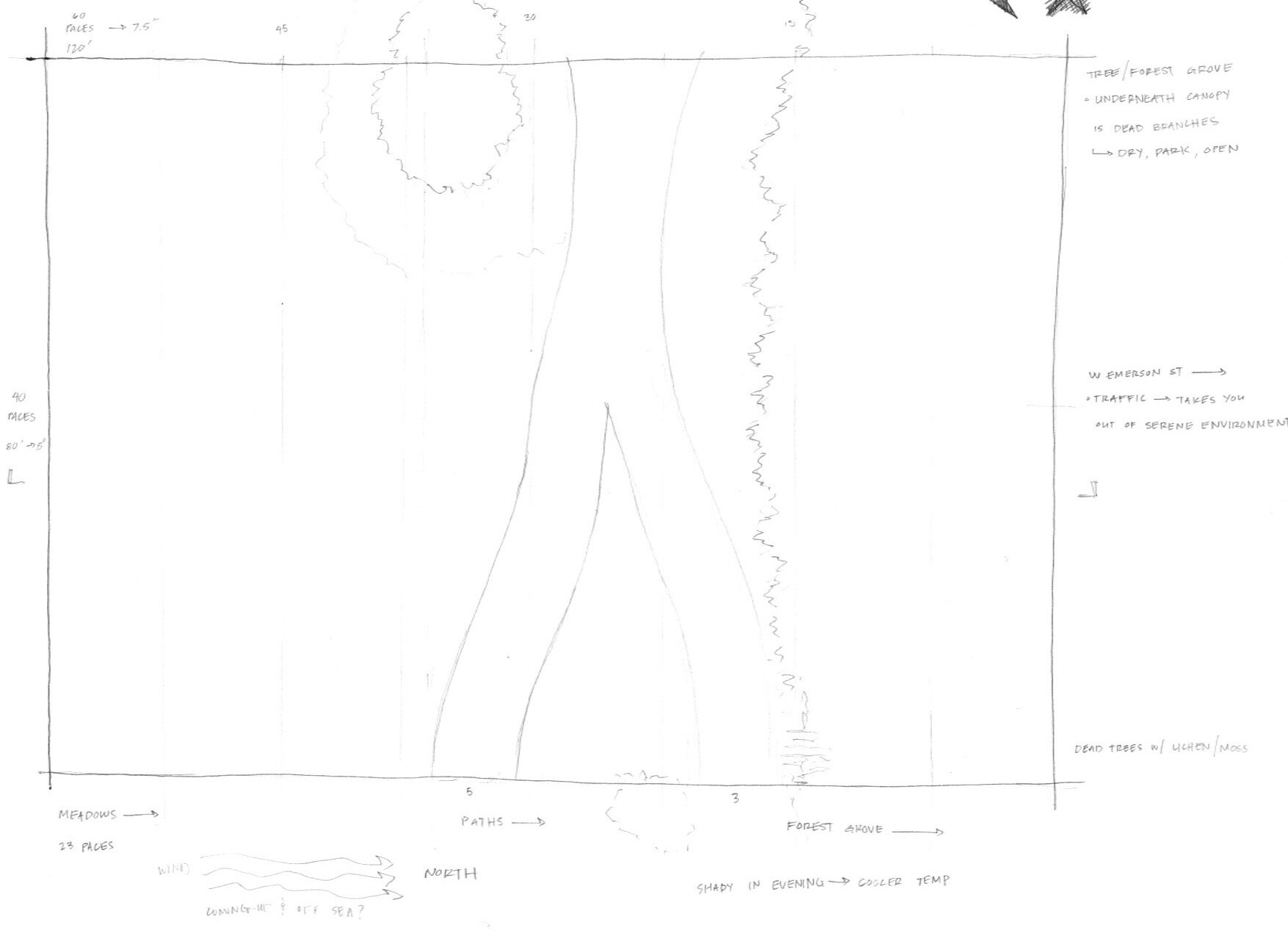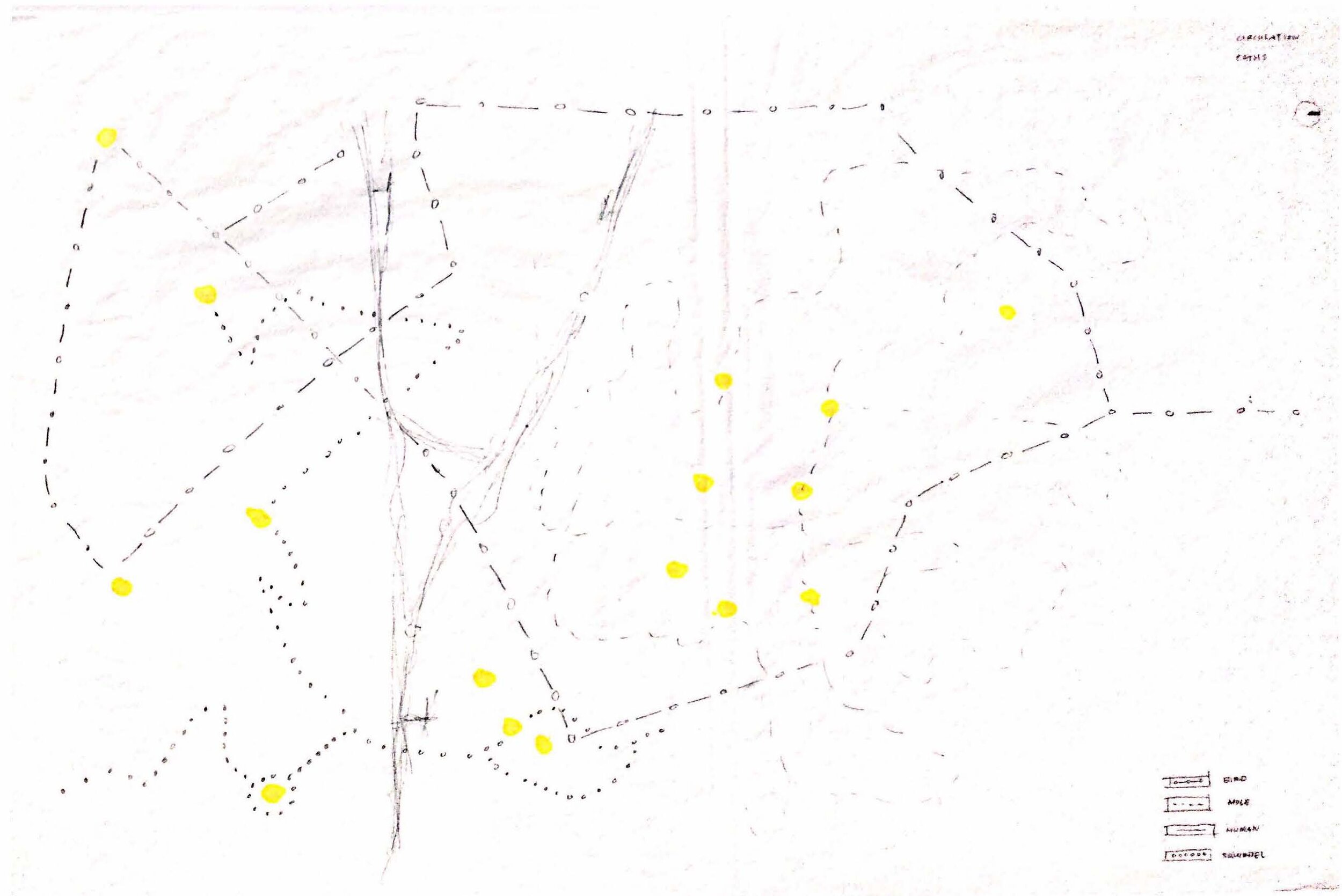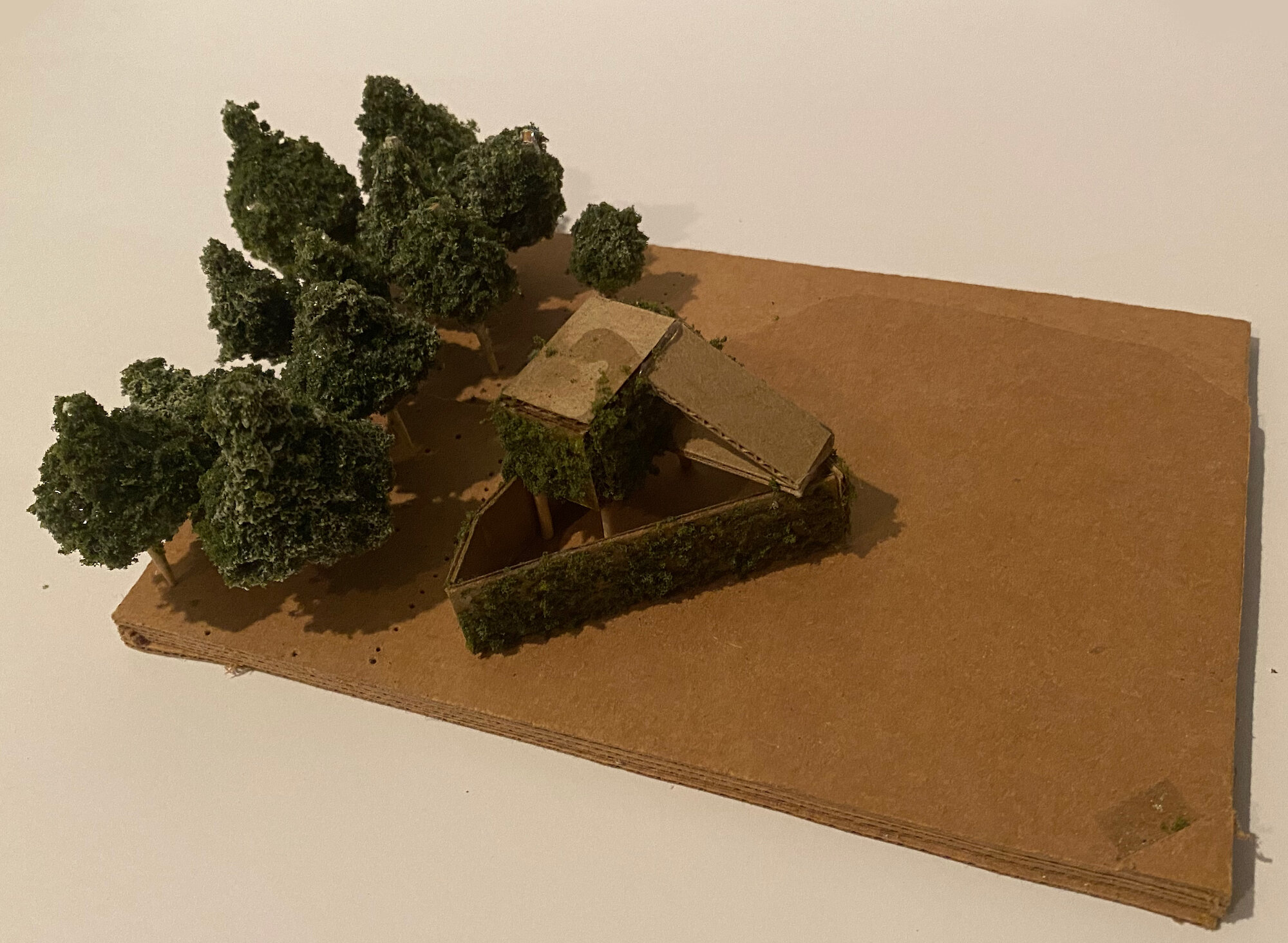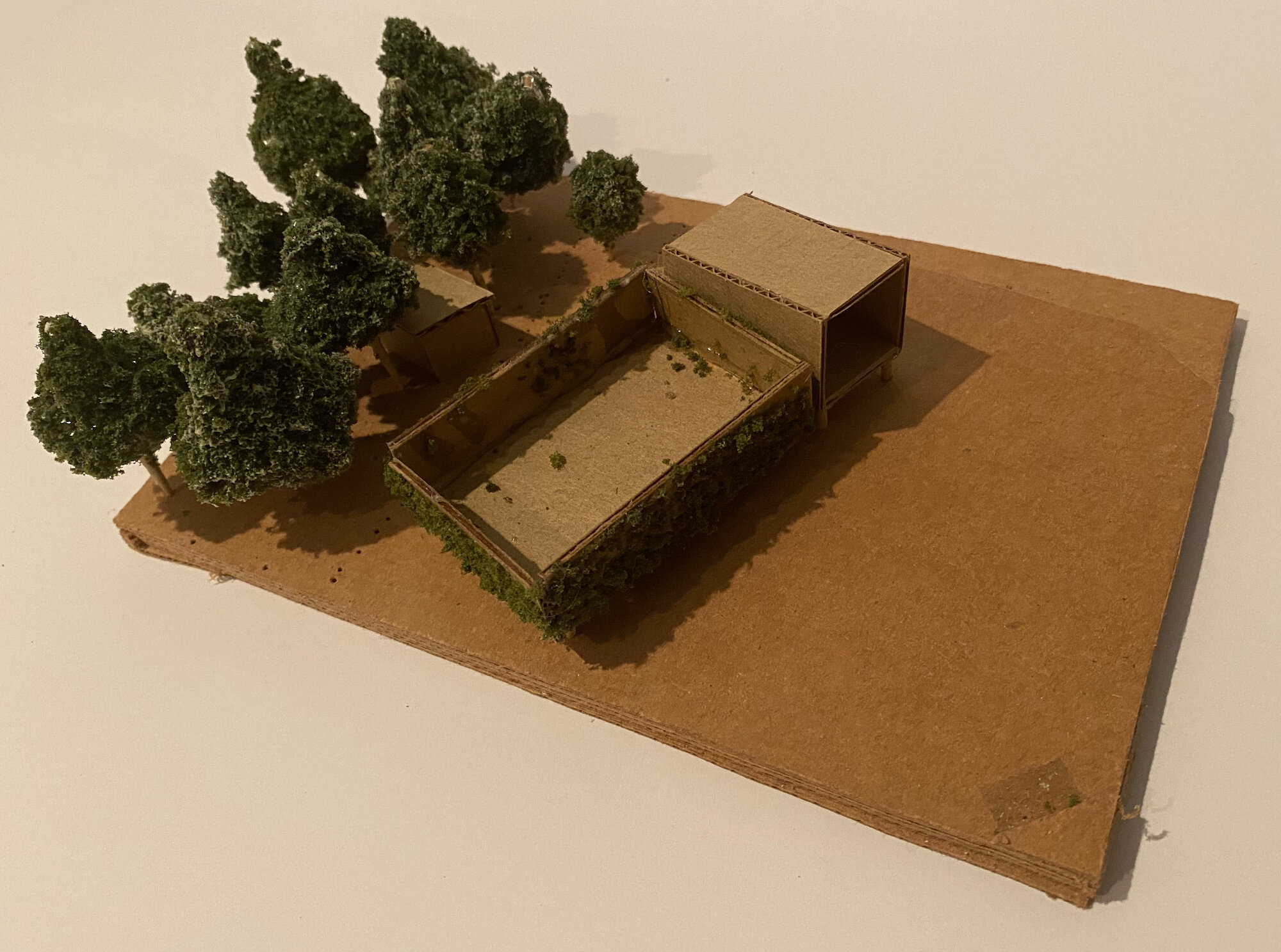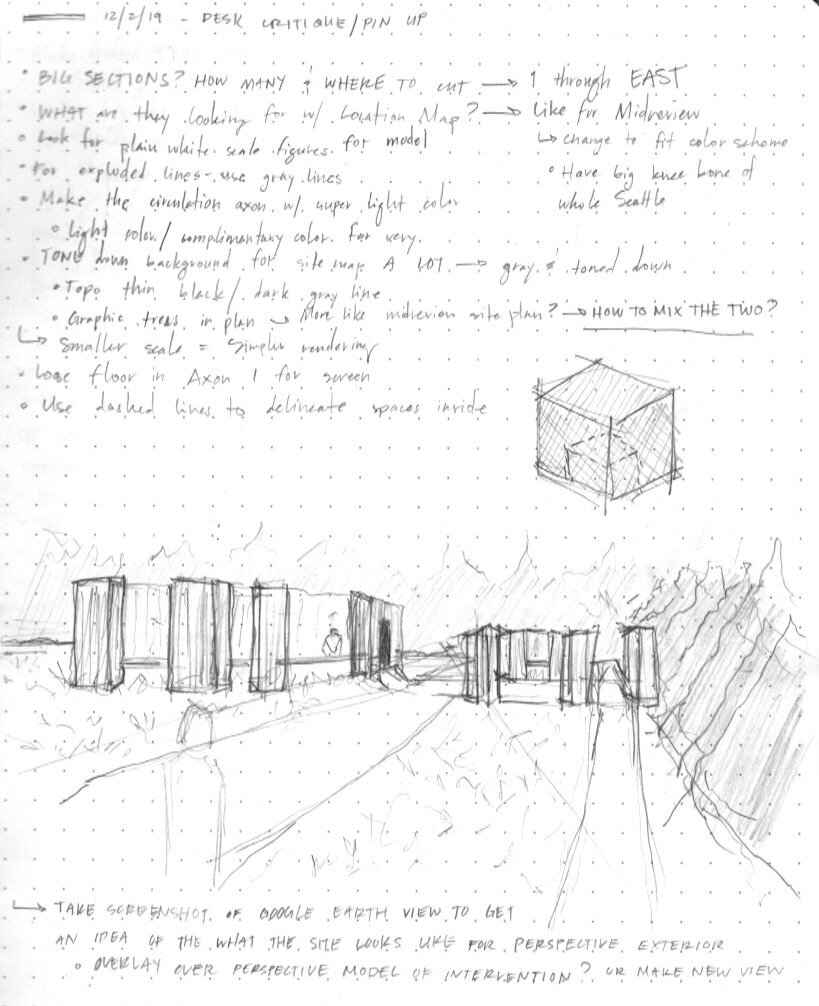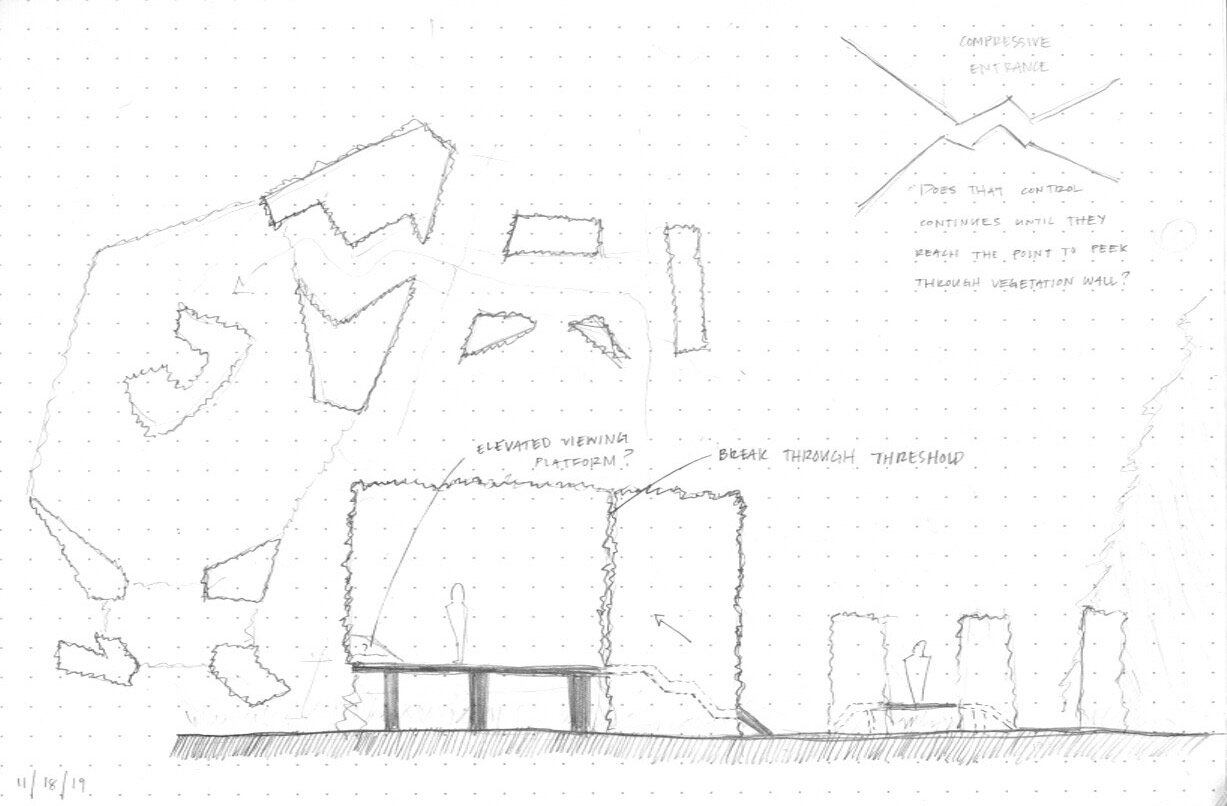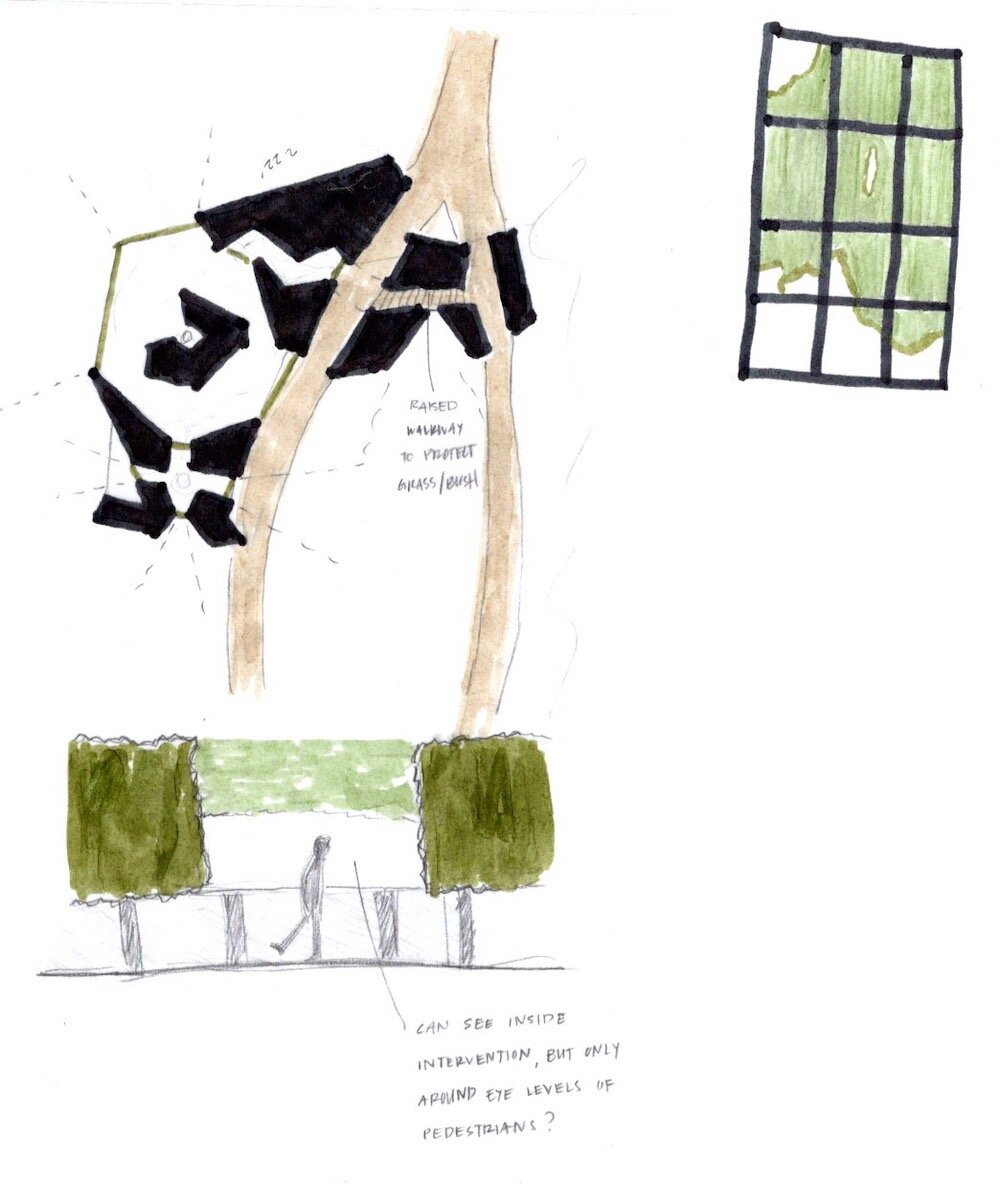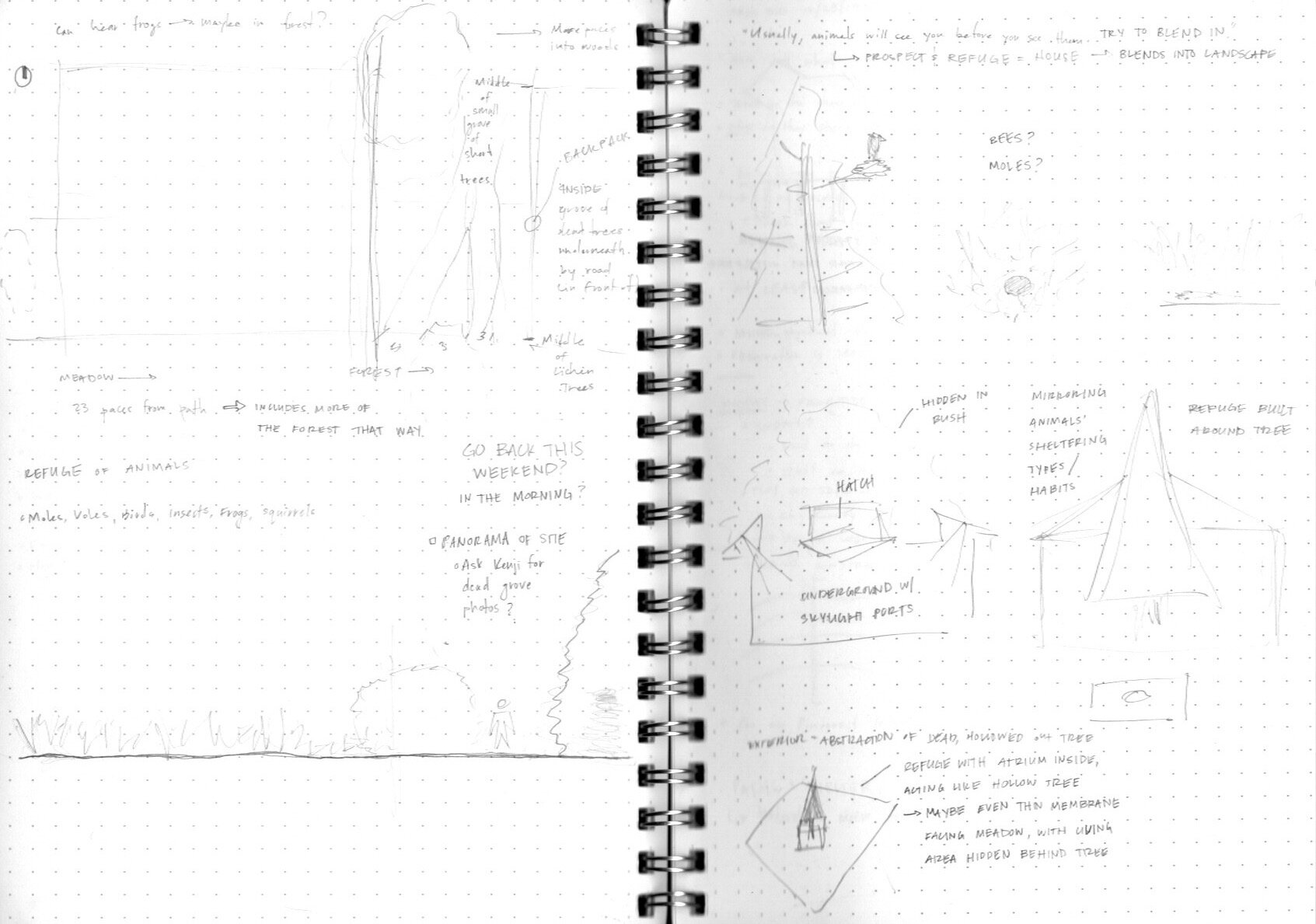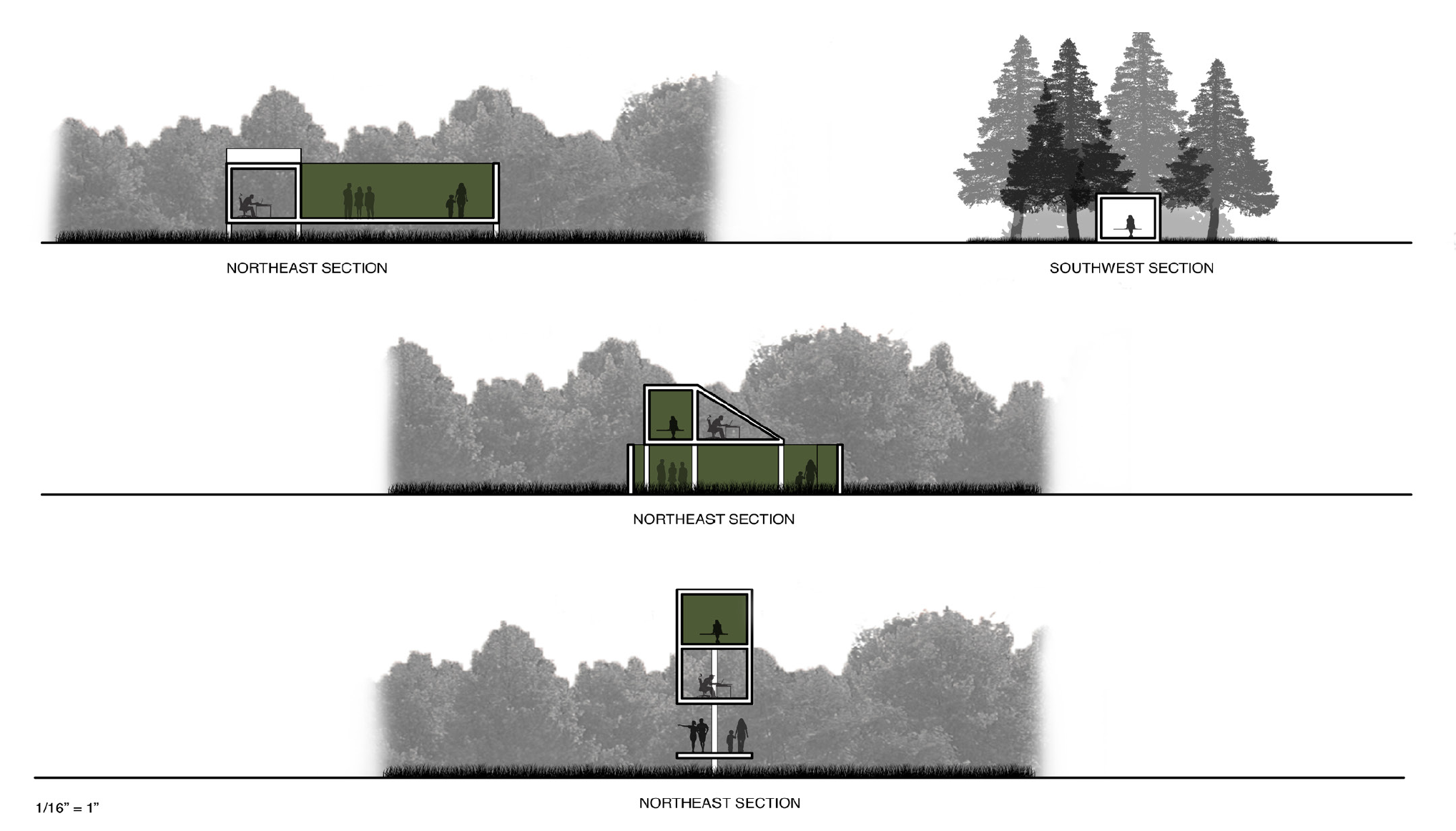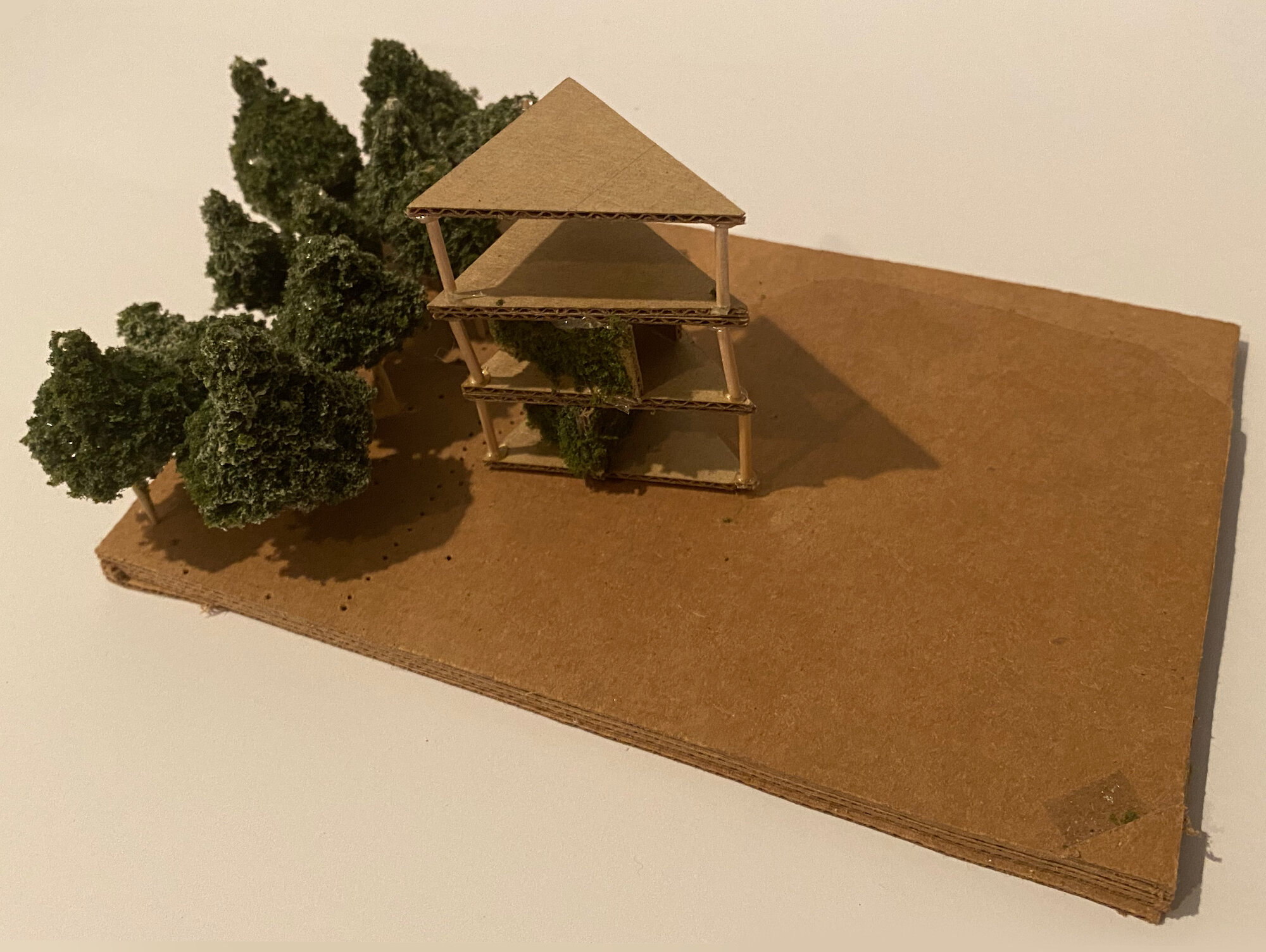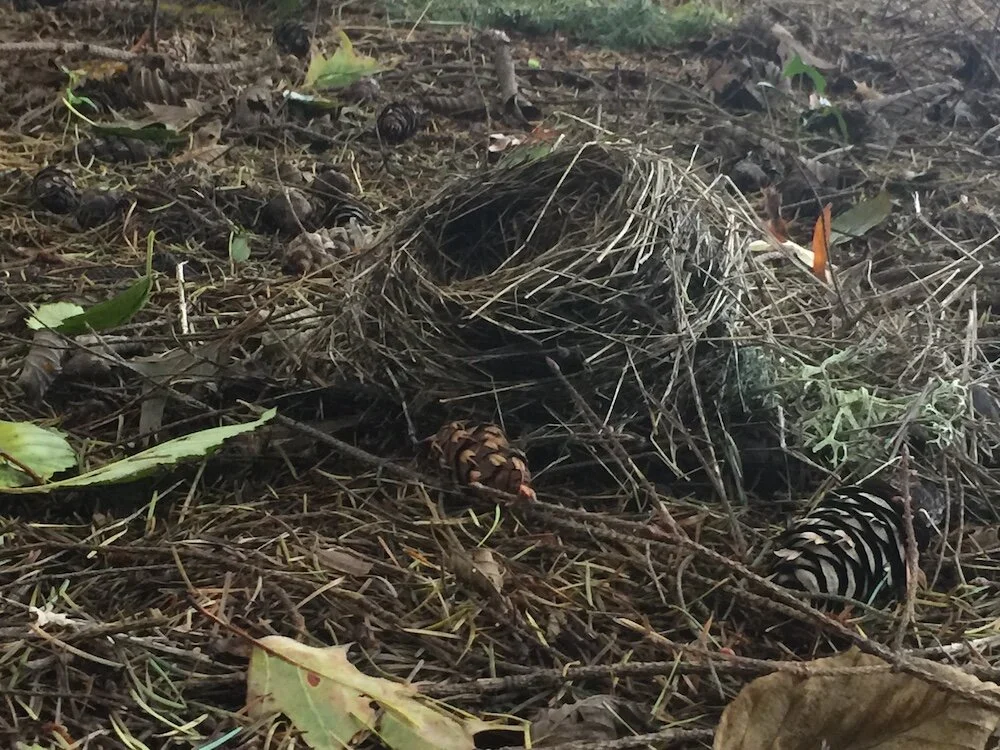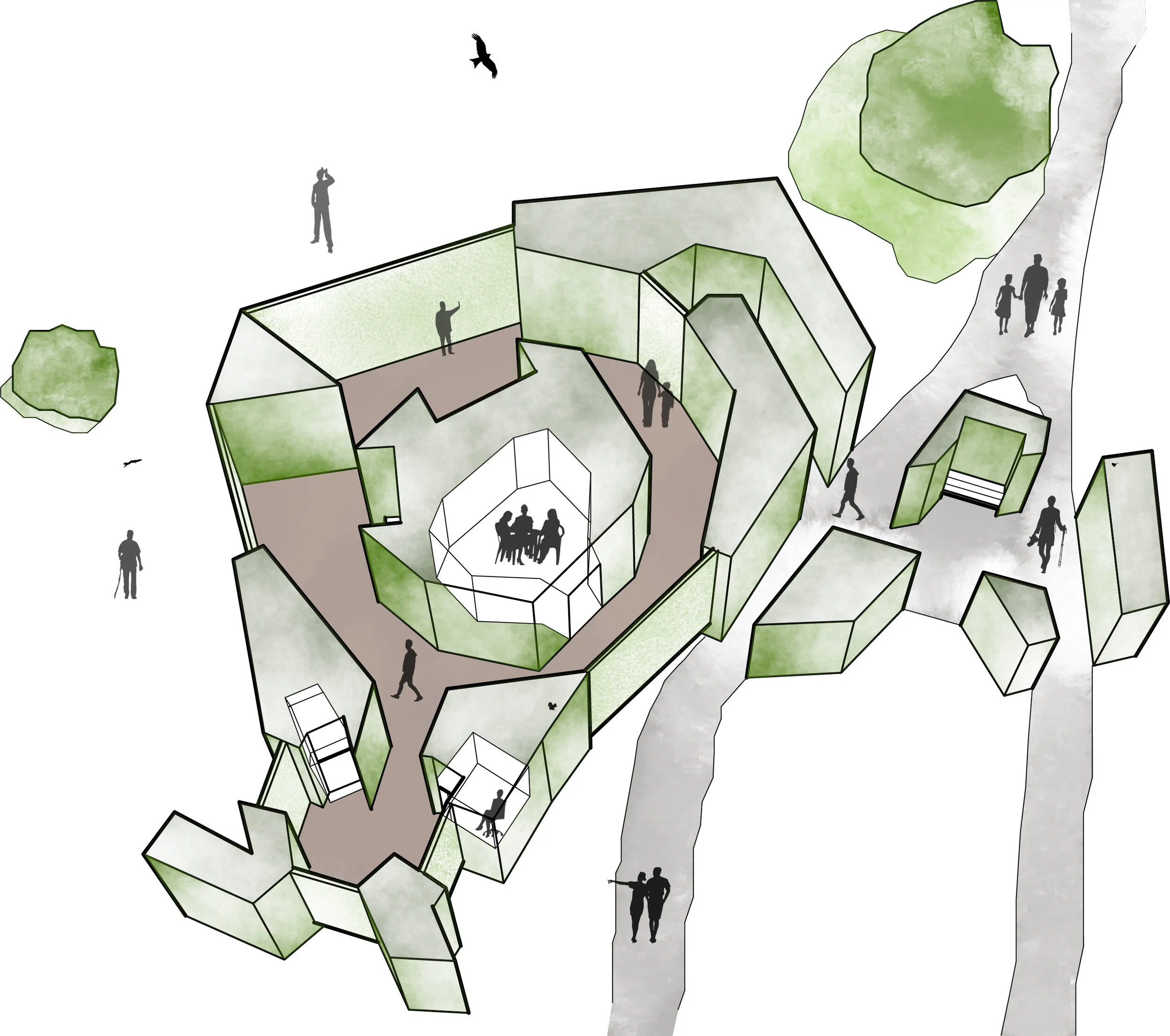
A Small Bird’s Eye View
The aim of this studio project is to design a refuge for a hypothetical scientist studying the natural phenomena of Discovery Park in Seattle. This scientist studies the behaviors of small urban forest animals like squirrels, moles, and sparrows. Located at the boundary of both forest and meadow, the refuge serves as a continuation of the forest with its topiary-covered structure.
One enters to a compressive hedge-maze-like sequence that opens up into the exhibit space, where one is free to walk around and learn different animals that reside in the park, or move the screens to look out onto the landscape. The park-goer is acting like a small bird or squirrel looking out of a bush or tree.
The impetus for the design concept was to create a place where humans could experience how the park animals of moles, squirrels, and birds experience the park. More often than not these animals are observing us where we can’t see them, and from that place those creatures could fully retreat to safety.
From this scientific refuge, park-goers can learn about the wildlife and their processes and habits, and could either retreat from the rest of the park altogether, or peer out from their hidden spot through screens of vegetation.
It is like a more literal, primal experience of prospect and refuge because humans use the project in that same way to a small bird peering out from the safety of a lush bush.
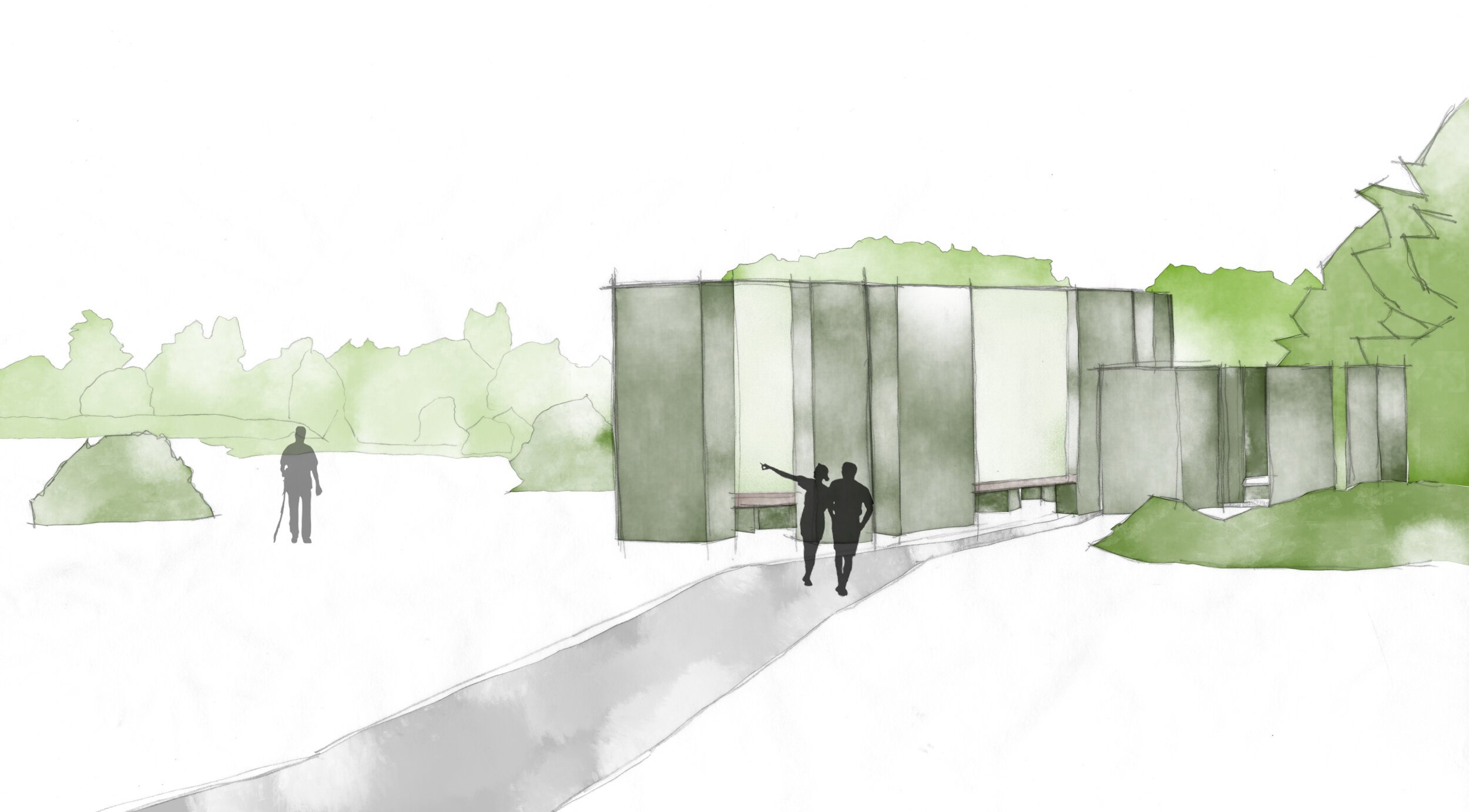
Section Vignettes for Hidden Refuges
Just like how an animal finds refuge in a the hedges, the scientist and the park-goers can also experience moments to pause in the niches of certain hedges that make the complex.

East Section Through Entrance Ramp

East Section Through Meeting and Learning Space

East Section Through Sleeping and Study Nook
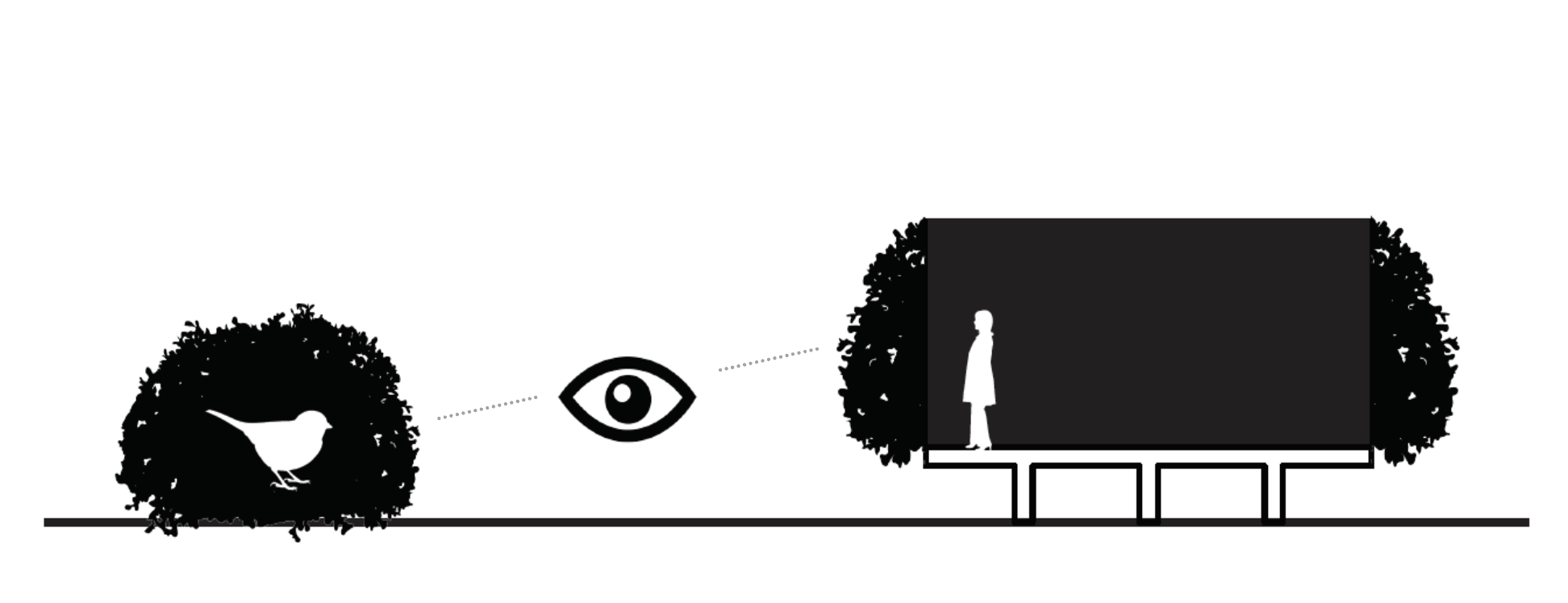
Perception
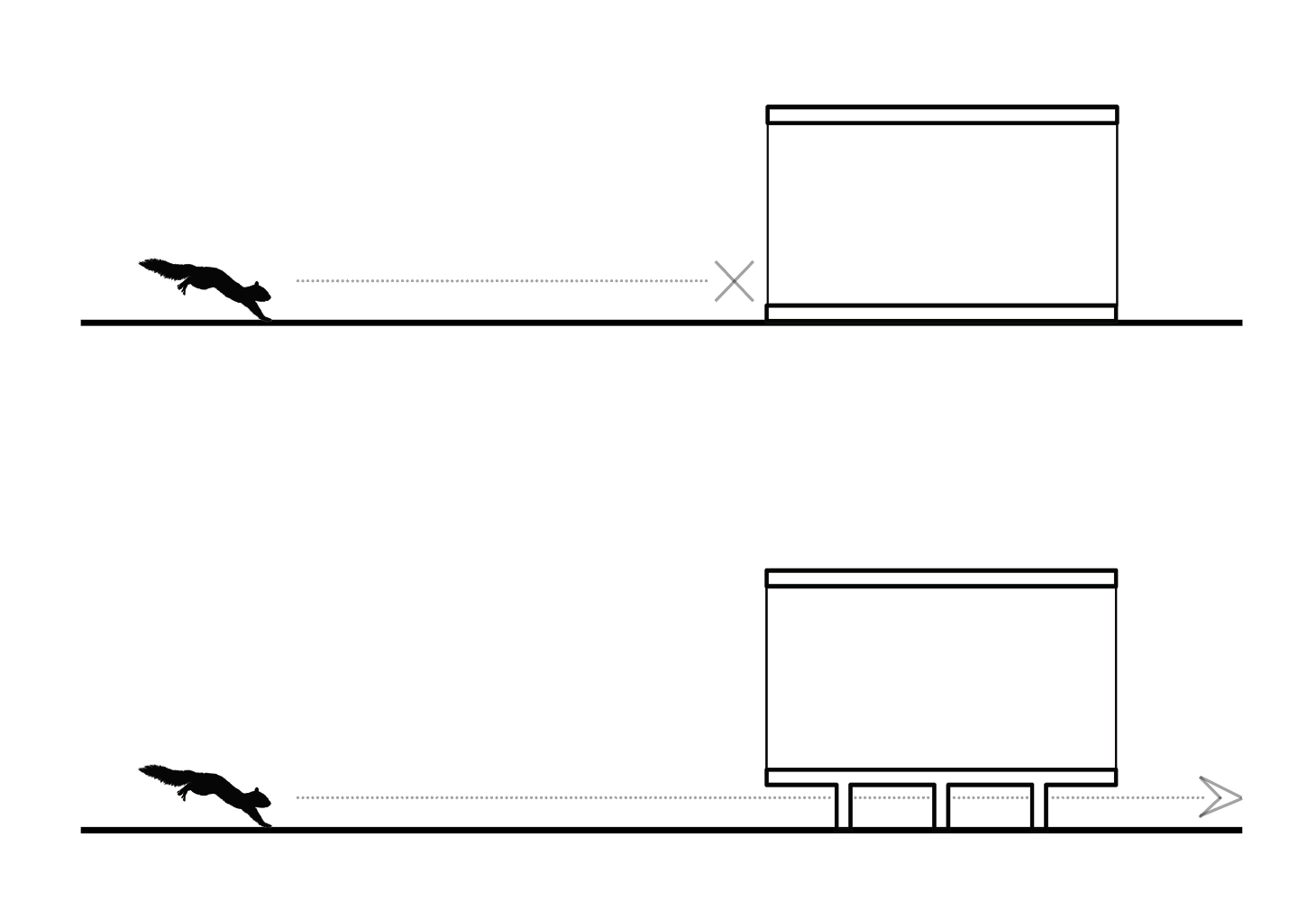
Animal Movement
Model Photos
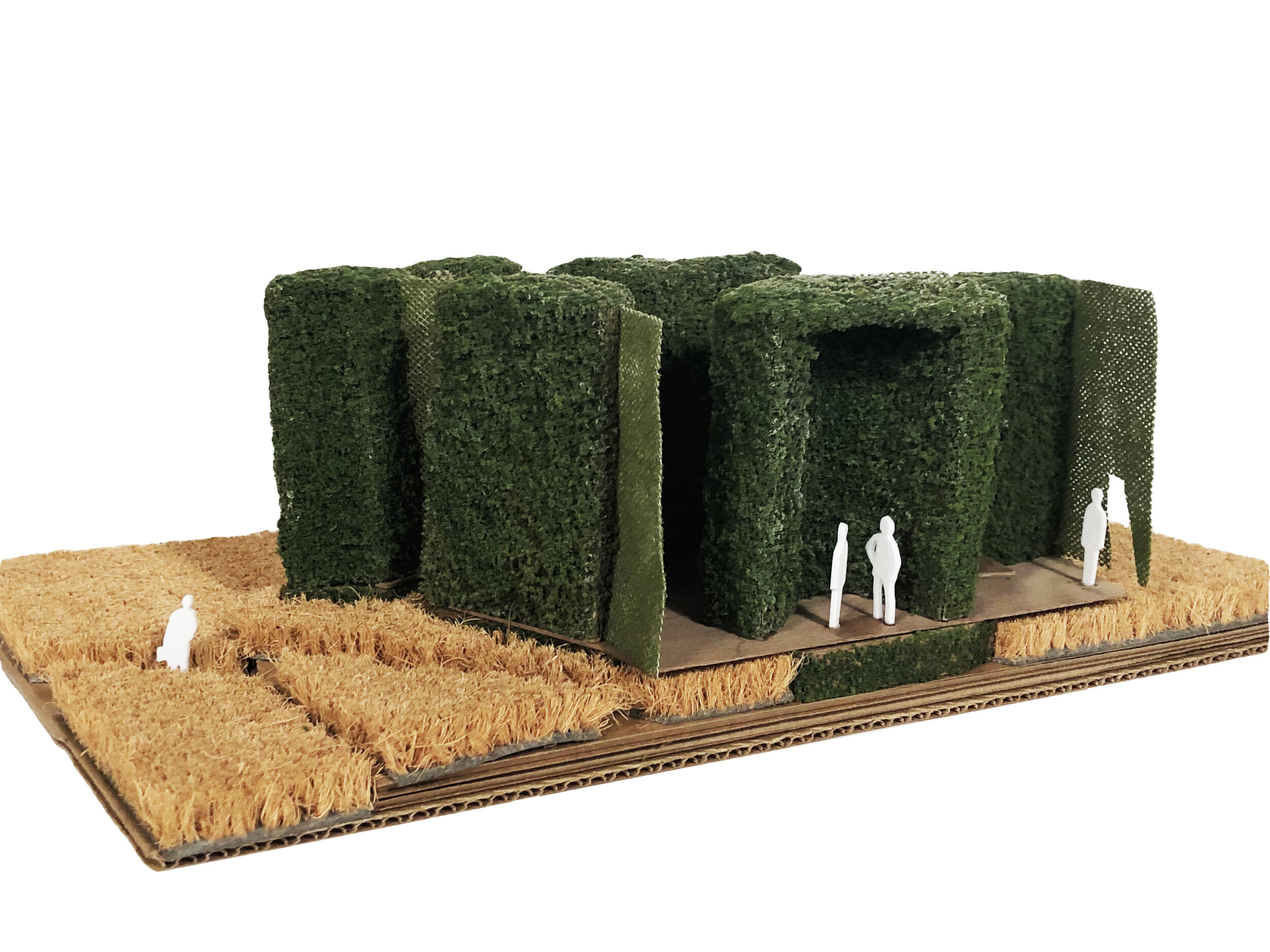
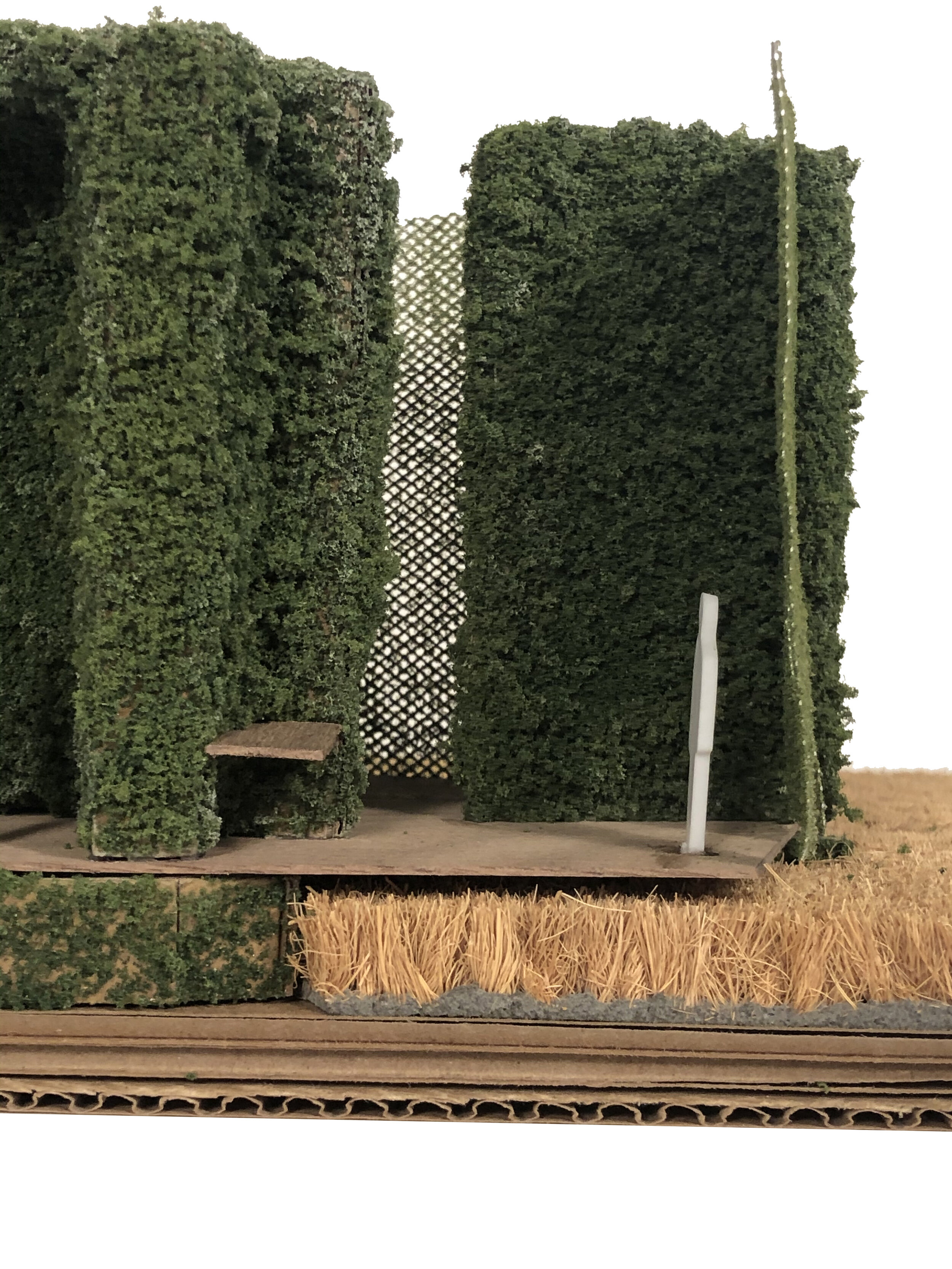
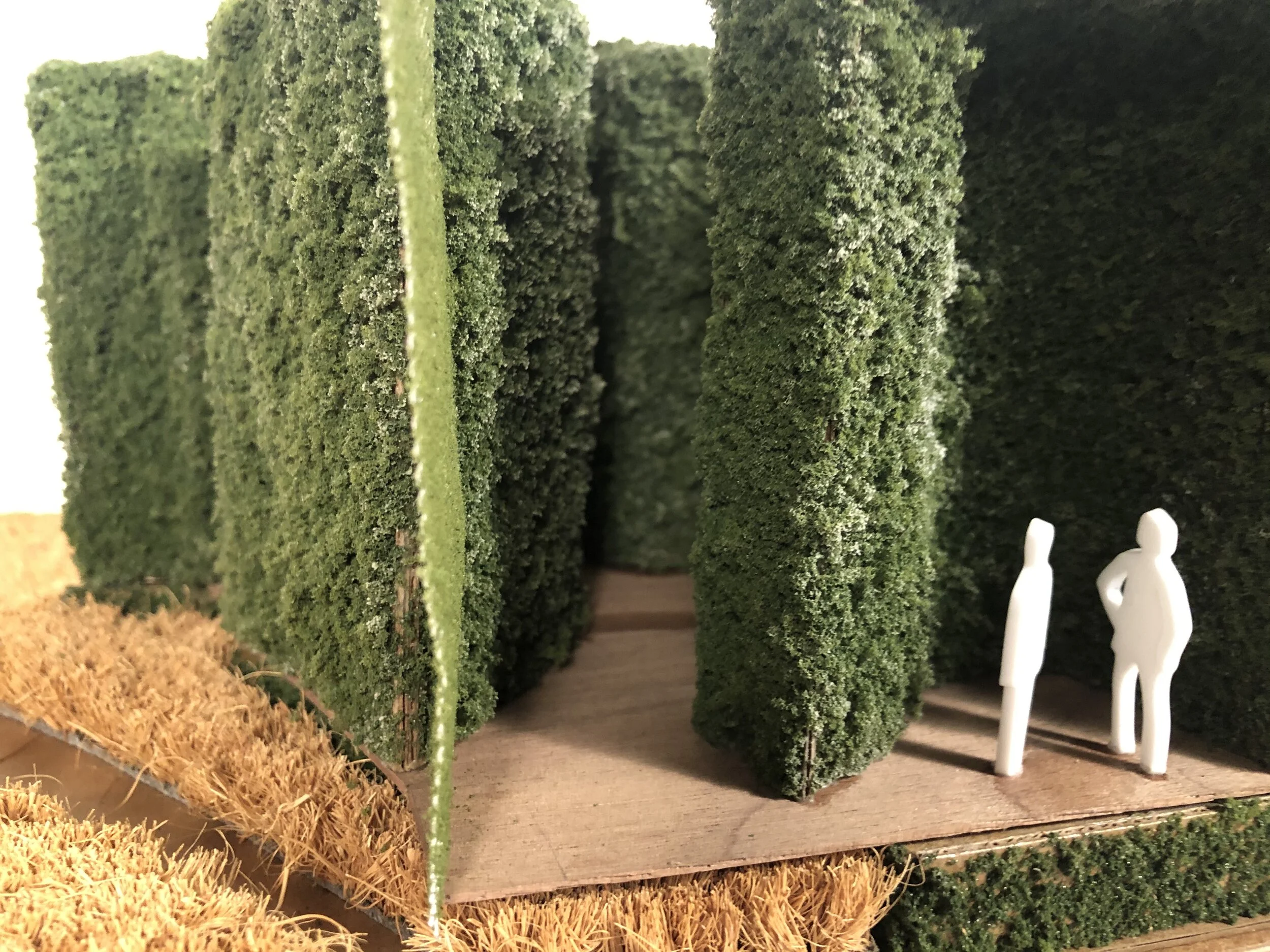

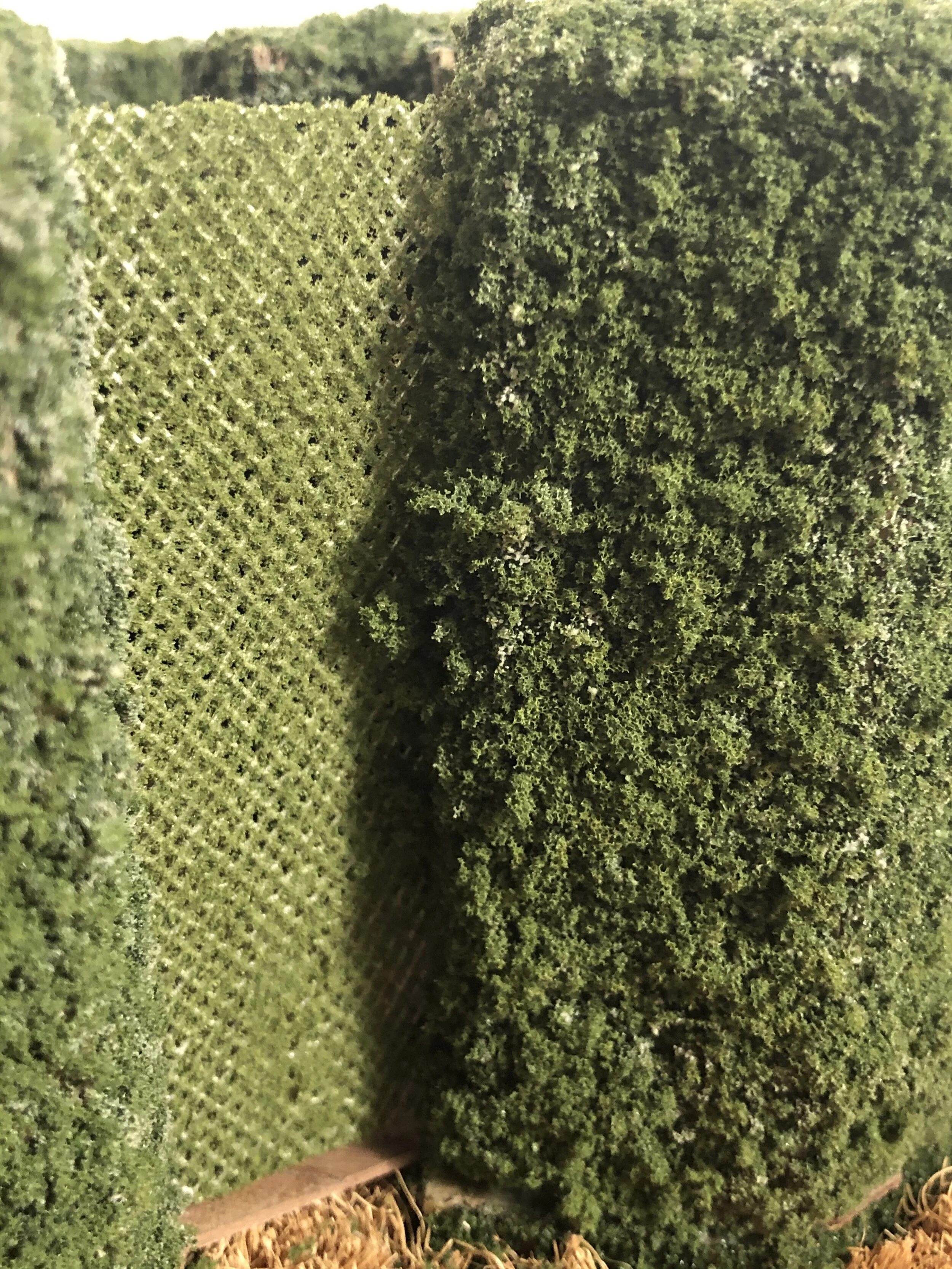
Process
